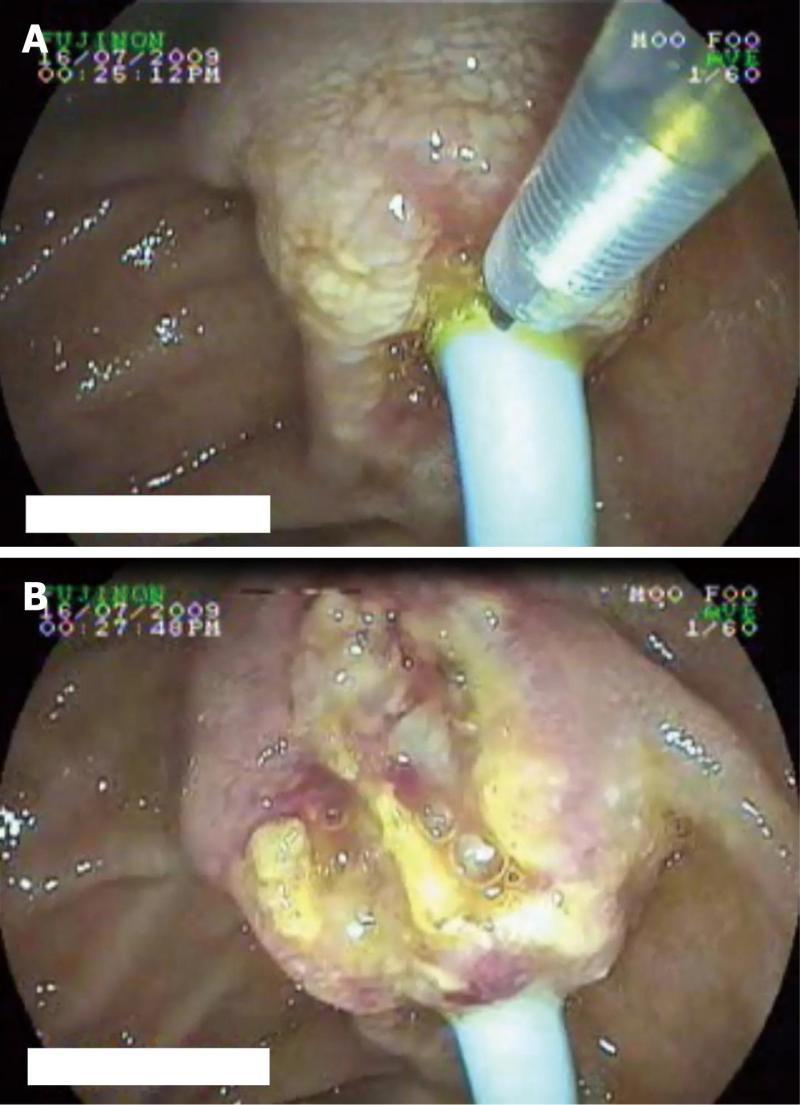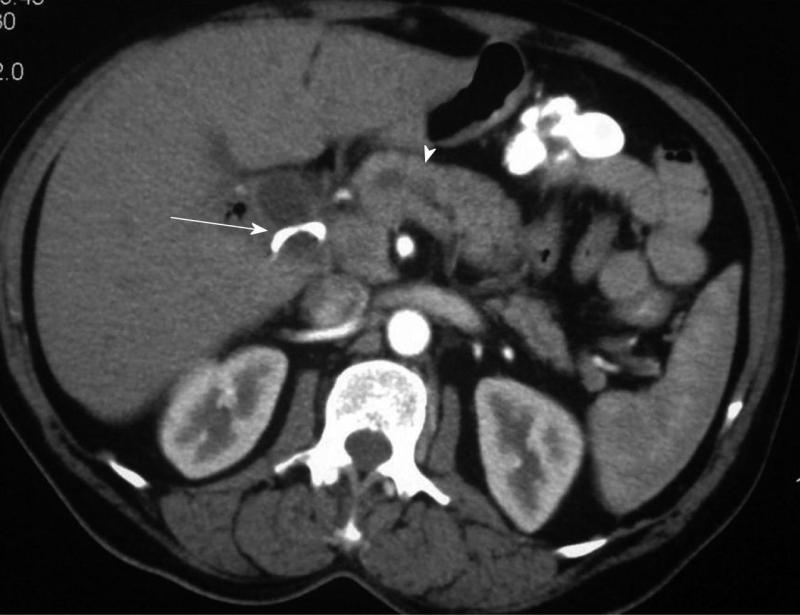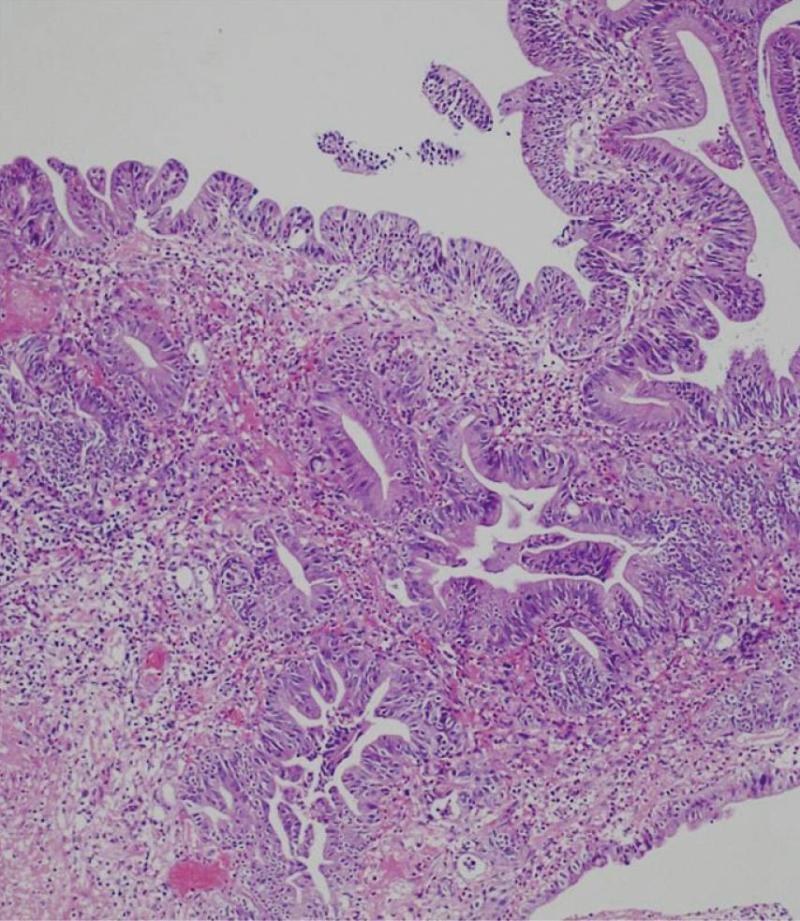Copyright
©2011 Baishideng Publishing Group Co.
World J Gastrointest Endosc. Nov 16, 2011; 3(11): 220-224
Published online Nov 16, 2011. doi: 10.4253/wjge.v3.i11.220
Published online Nov 16, 2011. doi: 10.4253/wjge.v3.i11.220
Figure 1 Duodenoscopy showing a periampullary mass with stent in situ and needle knife coming out of endoscope (A) and endoscopic image after needle knife papillotomy showing exposed tumor tissue (B).
Figure 2 Computed tomography showing dilated common bile duct with stent in it (arrow) and dilated main pancreatic duct (arrowhead); no definite mass could be visualized.
Figure 3 Endoscopic ultrasound image of the same patient as in Figure 2, showing dilated common bile duct measuring 11.
8 mm with stent in situ (arrow); a mass is seen in the periampullary region measuring 1.2 cm × 1.8 cm (arrowheads).
Figure 4 Photomicrograph showing papillary adenocarcinoma; tumor cells are arranged in both papillary fronds and glands (HE, × 240).
- Citation: Noor MT, Vaiphei K, Nagi B, Singh K, Kochhar R. Role of needle knife assisted ampullary biopsy in the diagnosis of periampullary carcinoma. World J Gastrointest Endosc 2011; 3(11): 220-224
- URL: https://www.wjgnet.com/1948-5190/full/v3/i11/220.htm
- DOI: https://dx.doi.org/10.4253/wjge.v3.i11.220












